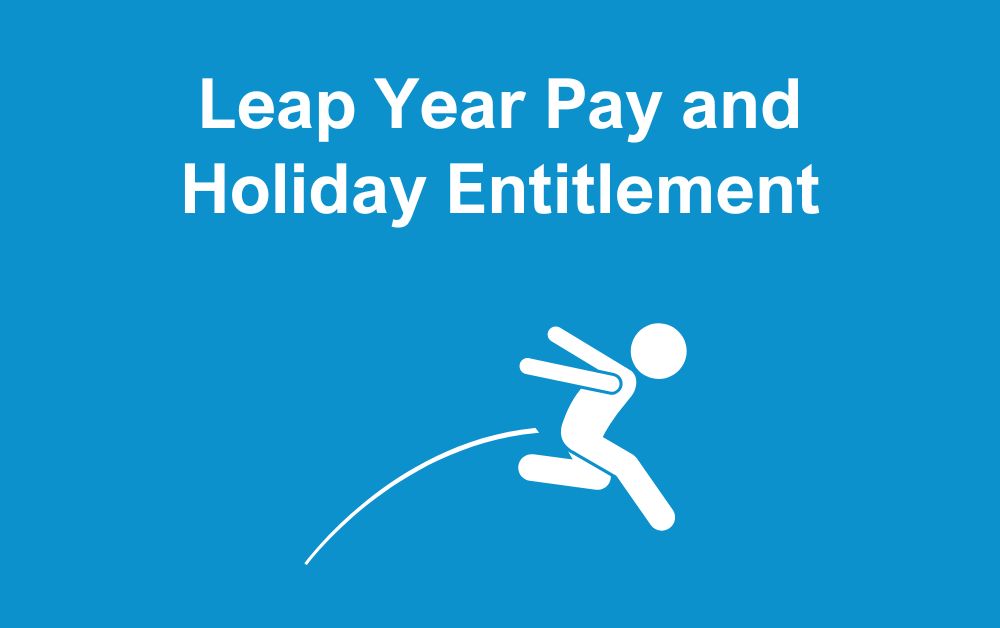Every four years, we experience the rare occurrence known as a leap year, adding an extra day to our calendar. But amidst the excitement of this calendrical anomaly, questions arise, particularly in the realm of employment: Does a leap year entitle employees to an extra day of leave? Let’s delve into this topic and unravel the complexities surrounding employee entitlements during leap years.
The Leap Year Conundrum:
Firstly, it’s essential to clarify that the extra day in a leap year is distinct from a bank holiday. Unlike bank holidays, there’s no automatic entitlement to an extra day of annual leave solely because it’s a leap year. Whether an employee is entitled to an additional day off or compensation depends on various factors, including their employment contract and the nature of their work.
The leap year conundrum is a fascinating aspect of our calendar system that arises from the need to synchronize our human-made calendars with the Earth’s orbit around the sun. Our calendar consists of 365 days, yet the Earth actually takes approximately 365.2422 days to complete one orbit. To address this discrepancy and ensure that our calendar remains aligned with the seasons, we incorporate an extra day, known as leap day, into the calendar every four years.
While the concept of adding an extra day to the calendar seems straightforward, the leap year conundrum arises from the fact that the Earth’s orbit is not precisely 365.25 days long. In reality, it is slightly shorter, leading to a small discrepancy over time. To compensate for this, the leap year rule is adjusted to skip leap years in certain cases, such as years divisible by 100 but not by 400. This fine-tuning ensures that the calendar remains accurate over the long term, preventing significant drift between our calendar and the Earth’s orbit.
The leap year conundrum has practical implications for various aspects of our lives, from scheduling events and appointments to financial planning and beyond. It underscores the complexity and precision involved in designing and maintaining our calendar system, highlighting the ingenuity of humanity in devising solutions to reconcile our man-made constructs with the natural rhythms of the cosmos. Despite the occasional confusion and adjustments required, the leap year conundrum serves as a reminder of our ongoing quest for accuracy and harmony in measuring time and marking the passage of years.
Salaried vs. Hourly Employees:
For salaried employees, whose pay and annual leave entitlement are typically predetermined and unaffected by the calendar’s quirks, leap years generally do not impact their compensation or time off. Unless explicitly stated in their employment contract, salaried employees are not automatically entitled to an extra day of leave in a leap year.
On the other hand, hourly paid employees operate under different circumstances. While they will receive payment for any work performed on the 29th of February during a leap year, it does not necessarily translate to entitlement to a day in lieu of the extra day. Again, entitlements for hourly employees may vary based on employment contracts, collective bargaining agreements, or company policies.
The distinction between paid and hourly employees lies at the heart of employment arrangements and carries significant implications for both employers and workers. Paid employees typically receive a fixed salary for their work, regardless of the number of hours they work each week. This arrangement offers stability and predictability for employees, as they can rely on a consistent income regardless of fluctuations in workload or hours worked. Employers benefit from the ability to budget and plan more effectively, knowing the exact cost of each employee’s compensation without concerns about overtime or hourly rates.
On the other hand, hourly employees are compensated based on the number of hours they work, often at an agreed-upon hourly rate. This arrangement provides flexibility for both employees and employers, as workers are compensated for the actual time they spend on the job, and employers can adjust staffing levels according to demand. Hourly employees may also have the opportunity to earn overtime pay for hours worked beyond a certain threshold, providing an additional incentive for employees to work additional hours when needed.
The choice between paid and hourly employment depends on various factors, including the nature of the work, industry standards, and regulatory requirements. While paid employment offers stability and predictability, hourly employment provides flexibility and transparency in compensation. Ultimately, both arrangements can be effective depending on the needs and preferences of the employer and the workforce. By understanding the differences between paid and hourly employment and their respective advantages and challenges, employers can make informed decisions that best meet the needs of their business and employees.
Navigating Holiday Pay and Entitlement Reforms:
Calculating holiday pay and entitlement for employees with irregular hours or part-year workers can be particularly complex, especially in the context of leap years. The Government provides guidance on holiday pay and entitlement reforms, offering resources to help employers ensure compliance with regulations and fairness in compensation practices. You can view this here.
In conclusion, the occurrence of a leap year poses unique considerations for employers and employees alike. While the addition of an extra day to the calendar may spark discussions about entitlements and compensation, it’s crucial to approach the matter with clarity and adherence to legal and contractual obligations.
For employees, understanding their rights and entitlements in a leap year hinges on reviewing their employment contracts and seeking clarification from HR or relevant authorities. Likewise, employers must navigate leap years conscientiously, ensuring fairness and compliance with regulations when determining employee entitlements.
Navigating holiday pay and entitlement reforms requires a nuanced understanding of employment laws and regulations, as well as a proactive approach to compliance and adaptation. Holiday pay and entitlement reforms often aim to ensure fairness and consistency in how employees are compensated for time off work, as well as to address evolving societal norms and expectations regarding work-life balance.
One significant aspect of holiday pay and entitlement reforms is the establishment of clear guidelines and regulations regarding annual leave accrual, calculation of holiday pay rates, and entitlements for part-time, casual, and temporary workers. Employers must ensure that they accurately calculate and record employees’ holiday entitlements, taking into account factors such as length of service, contractual arrangements, and any applicable statutory requirements. Additionally, reforms may introduce changes to how holiday pay is calculated, such as including additional elements like overtime, bonuses, and commission in the calculation to ensure that employees receive fair and equitable compensation during periods of leave.
Furthermore, navigating holiday pay and entitlement reforms requires effective communication and transparency between employers and employees. Employers must clearly communicate holiday entitlements, policies, and procedures to their workforce, including any changes resulting from reforms or legislative updates. Providing employees with access to information and resources regarding their holiday entitlements empowers them to make informed decisions about taking leave and ensures that they receive their entitled benefits in accordance with the law. By proactively addressing holiday pay and entitlement reforms, employers can foster a positive workplace culture that values work-life balance and promotes fairness and equity in how employees are compensated for their time off.
In conclusion, the occurrence of a leap year poses unique considerations for employers and employees alike. While the addition of an extra day to the calendar may spark discussions about entitlements and compensation, it’s crucial to approach the matter with clarity and adherence to legal and contractual obligations.
For employees, understanding their rights and entitlements in a leap year hinges on reviewing their employment contracts and seeking clarification from HR or relevant authorities. Likewise, employers must navigate leap years conscientiously, ensuring fairness and compliance with regulations when determining employee entitlements
Navigating holiday pay and entitlement reforms requires a nuanced understanding of employment laws and regulations, as well as a proactive approach to compliance and adaptation. Holiday pay and entitlement reforms often aim to ensure fairness and consistency in how employees are compensated for time off work, as well as to address evolving societal norms and expectations regarding work-life balance.
One significant aspect of holiday pay and entitlement reforms is the establishment of clear guidelines and regulations regarding annual leave accrual, calculation of holiday pay rates, and entitlements for part-time, casual, and temporary workers. Employers must ensure that they accurately calculate and record employees’ holiday entitlements, taking into account factors such as length of service, contractual arrangements, and any applicable statutory requirements. Additionally, reforms may introduce changes to how holiday pay is calculated, such as including additional elements like overtime, bonuses, and commission in the calculation to ensure that employees receive fair and equitable compensation during periods of leave.
Furthermore, navigating holiday pay and entitlement reforms requires effective communication and transparency between employers and employees. Employers must clearly communicate holiday entitlements, policies, and procedures to their workforce, including any changes resulting from reforms or legislative updates. Providing employees with access to information and resources regarding their holiday entitlements empowers them to make informed decisions about taking leave and ensures that they receive their entitled benefits in accordance with the law. By proactively addressing holiday pay and entitlement reforms, employers can foster a positive workplace culture that values work-life balance and promotes fairness and equity in how employees are compensated for their time off.
Ultimately, whether it’s a leap year or not, fostering a workplace environment built on transparency, communication, and respect for employees’ rights is paramount. By navigating leap years with clarity and fairness, employers can uphold their commitment to their workforce while navigating the intricacies of the calendar’s quirks.







